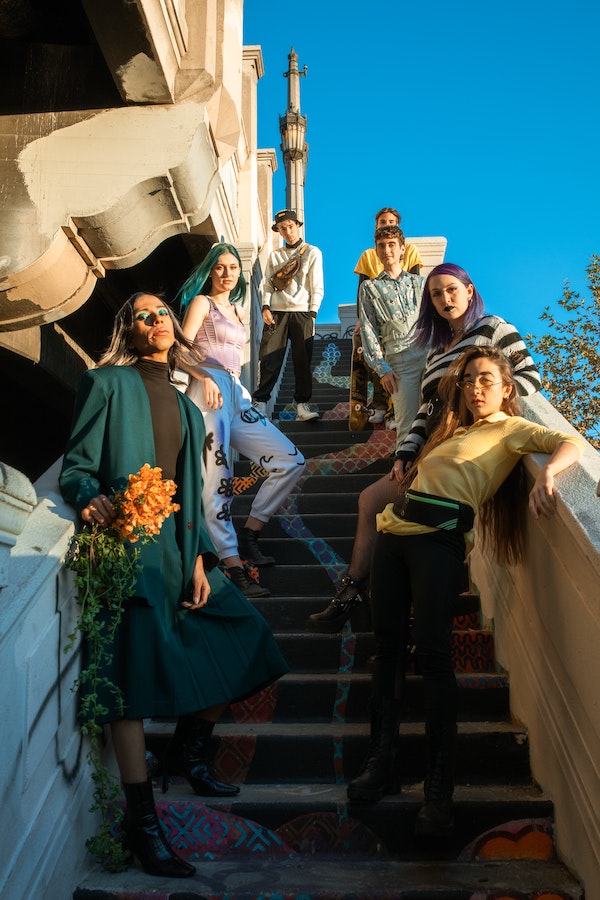
How to successfully reach Gen Z customers
Michaela Fraser is Head of UX at leading Gen Z fashion brand Princess Polly. Beginning with a single store in Australia, the brand has since seen rapid success and expansion into the US market. Its success has made it a shining example of best practice for reaching this demographic.
In this blog Michaela explains:
· Why one UX doesn’t suit everyone, and how global brands must adapt to different shopping habits across international markets
· How influencer collaboration is key to reaching the Gen Z demographic and reacting to the latest trends
· That fashion customers are seeking unique personalisation, which is why putting user-generated content is so important
· That insight from customer behaviour can help optimise your service and brand.
Understanding Gen Z can be a challenge for even seasoned marketing professionals. The always-online generation has a completely different view of social media and e-commerce to older shoppers and knowing how to address this growing demographic is of increasing importance when designing e-commerce platforms.
PrincessPolly is a company that has had considerable success reaching these customers.And the process of expanding from Australia into the US has revealed different behaviour and shopping habits between the two markets.
Michaela has to cater for different browsing habits and adapt UX design to meet these different needs, demonstrating how a one-size-fits all approach won’t work for global brands.
For example, Australian customers prefer navigation, relying on main headline categories when browsing the site, while in the US, shoppers are more likely to drill down into subcategories and search for products directly.
Marketing is heavily affected too, since Australian customers tend to favour larger, traditional channels - such as Facebook and Instagram, while the US audience is open to a wider range of social media platforms, including TikTok, Spotify andTinder.
Having a Gen Z customer base requires the company to move quickly to react to new trends and always be willing to try new ideas.
Oneway the company reaches Gen Z is with a marketing strategy that relies on influencers, with over 100 collaborations per month. Trends move fast in this industry, so knowing what comes next is not just important for marketing, but for a fashion brand, these close relationships help direct product strategy too.
Michaela explains that authenticity is a key aspect of the Princess Polly brand, which is important because Gen Z is passionate about issues such as environmental and social responsibility. The brand is serious about broader representation than just catering for the core demographic alone.
Portraying models of all shapes and sizes is crucial, which is why Princess Polly has maintained a no-Photoshop policy, in place for over two years, avoiding the use of imagery that has been artificially enhanced to present unrealistic representation of its products.
Showing a brand takes inclusivity seriously has to include ensuring the site’s UX follows this philosophy as well. Michaela works closely with the design team to ensure the site is usable for customers with disabilities, such as the ability to adjust font sizes and improve general usability.
User-generated content is a big part of the site design, providing real feedback from customers and helping understand trends. Allowing the customer to have some idea of what the product will look when being worn.
Fashion customers are always seeking inspiration and personalisation so the site uses curated albums showcasing outfits and offering ideas for customers, while product albums are visible on almost every page. Users can tag images of themselves wearing outfits, offering a way to see real people wearing real products.
Michaela also highlights the importance of a mobile app for Gen Z customers, who have grown up in a mobile-first world. Princess Polly offers an Instagram-like way to open the app and immediately start scrolling through product imagery.
Listening carefully to customers and responding to their feedback is useful advice for any brand, but critical in the fast-moving world of Gen Z fashion. Michaela explains some of the traditional, and not-so-traditional ways Princess Polly handles this.
In addition to the usual ways of garnering feedback, such as questionnaires and customer reviews, careful analysis of search terms reveals a lot about customer thinking and behaviour, again both influencing product strategy as well as providing useful knowledge for the website’s development.
Michaela reveals that a customer survey has been instrumental in building the brand and a roadmap for the site’s development for the next 12 months.
It involved gathering feedback on pricing and quality, asking about the differentiators that let customers choose Princess Polly over competitors, and even social responsibility, to ensure the brand was handling global issues, such as sustainability in a way its customers would expect.
As well as providing useful new ideas to integrate into the site and brand, the survey revealed some customers asking for features that already existed, which indicated more can be done to bring them into the forefront of the user experience.
All brands can learn from the experiences and success of Princess Polly in their approach, by giving customers:
1. Inspiration, a way to browse products in a relatable way.
2. Personalisation.
3. A streamlined customer journey, making it as simple and concise as possible when purchasing with as few steps as necessary.
As a final thought, Michaela highlights a post-purchase strategy, with emails and pop-ups 50 and 100 days after a customer has bought something from the site, which works not just as a way to win back custom but also to recreate some of the personal connection you get from in-person retail.
But besides these digital channels, she highlights how the brand tries to stay connected to customers via a loyalty scheme that invites customers to exclusive events and experiences.
Rather than just relying on a traditional bricks-and-mortar retail model alone, she sees these kind of in-person interaction as playing a big part in the future of the brand.


.png)
%20(2).png)